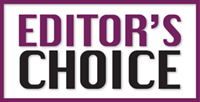
Testicular torsion is a urological emergency that requires prompt diagnosis and intervention. Some providers are becoming increasingly dependent on ultrasound (US) to make the diagnosis. This NIH clinical trial evaluated the use of the TWIST (Testicular Workup for Ischaemia and Suspected Torsion) score by non-urologist non-physician providers (emergency medical technicians). Patients were scored (summed range 0-7 points) based on the absence (0) or presence of five variables, including testicular swelling (2), hard testicle (2), absent cremasteric reflex (1), nausea or vomiting (1) and high riding testis (1). The emergency medical technicians did not undergo any specific training for scrotal examination or TWIST scoring, but relied on their basic history taking and examination skills. Over a two-year period (2013 to 2015), 154 patients were enrolled and 128 had TWIST data available (125 underwent US). Patients were categorised according to score: low risk (0 points), intermediate risk (1-5 points) and high risk (6-7 points). No patients with a score of 0 had torsion (negative predictive value 100%). Of 31 high- risk patients, 29 had torsion (positive predictive value 93.5%). The score was more sensitive in older patients (Tanner Stages 3-5). The authors suggest a treatment algorithm: low-risk – no US or operation required; intermediate-risk – US recommended; high-risk (Tanner 3-5) – explore testis; high-risk (Tanner 1-2) – consider US prior to exploration. This was an interesting paper demonstrating that non-specialists can use a scoring system to triage patients and potentially expedite surgery. However, US is not without its limitations (e.g. missed intermittent torsion, residual flow with early torsion and observer variance) and can delay definitive time to treatment. I still feel that good history taking and examination skills are paramount and follow the adage – ‘if in doubt, explore the testis’ (without proceeding to US or other imaging).



